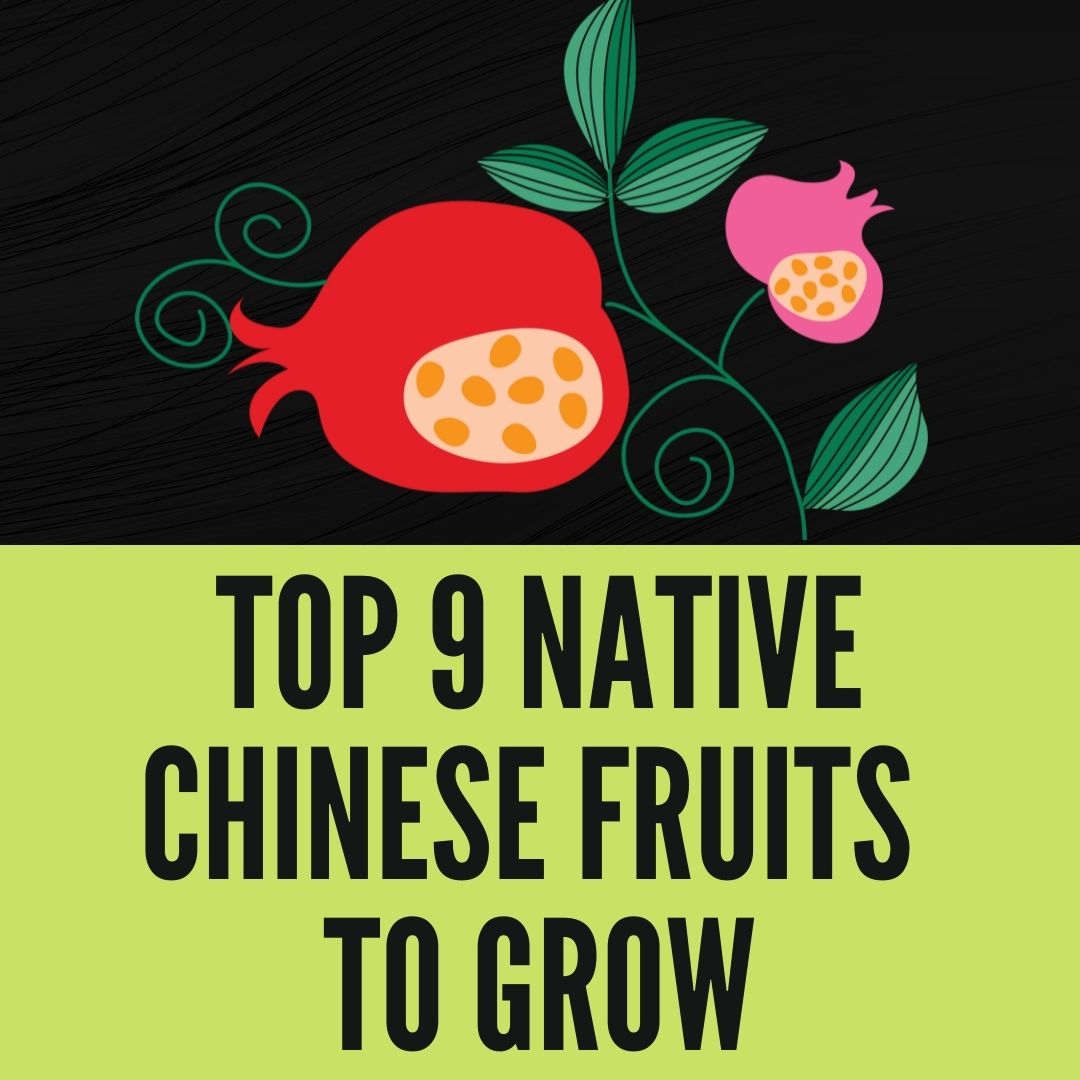China is undoubtedly a behemoth of a nation, as it is the biggest country in Asia and home to the world’s largest population. Stretching from the Taklamakan Desert to the coast of Fujian, China has enormous diversity in geography, culture, and ethnicity.
China is also known to the whole world because of its economic growth and foreign diplomacy. From paper to gunpowder, this wonderful land is also the birthplace of many revolutionary inventions spanning history.
Having 22 provinces, China can also offer an immense variety in landscape, climate, and biodiversity. And with that comes a colossal number of local fruits. And this collection of fruits can be discovered in most of Asia and sometimes also the whole world. And we are about to make ourselves accustomed to some native fruits that China can offer to us.
Native Chinese Fruits
1. Lychee
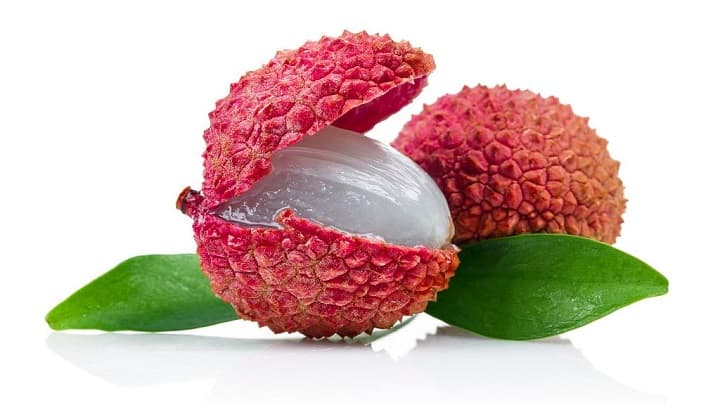
Starting with Lychee, which is a reddish heart-shaped tropical fruit with somewhat a spiky inedible exterior and a juicy flesh beneath it that is usually pink and semi-transparent, covering a dark brown seed at the center. People can buy this fruit fresh or canned, which can be eaten cooked or uncooked. Industrially, this fruit is an excellent ingredient for juices and snacks.
As for the name, it means “the gift of a joyful life” in Chinese. And it is joyful indeed because the fruit is greatly luscious, delightful, and a little bit acidic. And it is often eaten ripe and fresh. If you travel to China, you may find yourself served with Lychee is a fruit cocktail as a desert.
Benefits: Lychee is a great fruit to have in your diet as it is rich in fiber and helps you lose weight. Lychee is also a rich source of antioxidants Vitamin C that prevents you from Asthma and Arthritis. It has minerals such as Potassium and Copper that maintain electrolytes and good blood pressure.
Possible Side Effects / Dangers: Lychee is high in sugar. Having too much lychee is often hazardous as it can cause a perspiring and dizzy feeling. It is advised to be careful while providing lychees to children since they may have to adapt to this fruit.
2. Rambutan

Often compared, Rambutan is a relative fruit to Lychee as they share many similarities. The name Rambutan means “hairs” in Malay. It’s because the outside is more hairy or furry than spiky, unlike Lychee. After peeling, the shape of this fruit can be similar to ping-pong or a golf ball. The flesh inside is thicker and less juicy than Lychee making it more gigantic.
And just like Lychee, people enjoy this fruit cooked or uncooked too. The seed inside can also be eaten if it is roasted properly. The flavor of Rambutan is often similar to the grape as it is slightly more acidic within. It also has a pleasant aroma that is useful for cooking many tropical foods.
Benefits: Rambutan shares the same health benefits as Lychee, except Rambutan has more fiber and less sugar, making Rambutan more healthy and more effective for losing weight than Lychee.
Possible Side Effects / Dangers: Rambutan’s peel and seed are often toxic. Roasting the seed may reduce the effect, but it is better and safe if you dispose of the seed before eating the fruit.
3. Durian
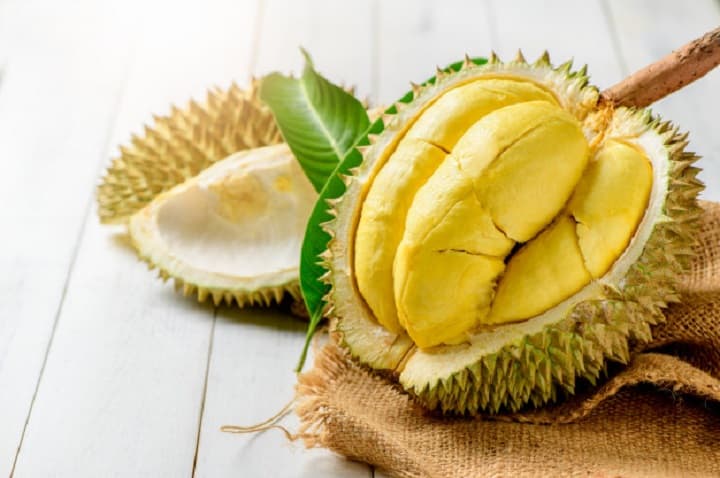
Durian is called “the king of fruits” in most Asian countries including China. Which makes Durian expensive as well. 1 Kilo can cost more than 15 USD or 100 RMB. The exterior of this fruit is spiky and its size is almost comparable to a small watermelon. Inside, the meat is yellow and it tastes like custard pudding with Almond.
It’s the flavor that makes Durian a bit of a controversial fruit. You may like it or dislike it according to the smell. It varies from person to person but it is treated as a luxurious fruit in China.
Benefits: Durian proved to be one of the best foods to prevent cancer as it helps to decrease cancer-promoting cells. It is very rich in calories, minerals, and vitamins, mostly Vitamin B. It has anti-bacterial elements that can help reduce infections. It also prevents heart diseases and lowers blood sugars.
Possible Side Effects / Dangers: Durian is extremely high in calories. So, it should not be in a diet plan for losing weight. A person should only start eating Durian little by little until his body can cope with it. Too much consumption may cause the body to heat up and sweat a lot.
4. Dragon Fruit
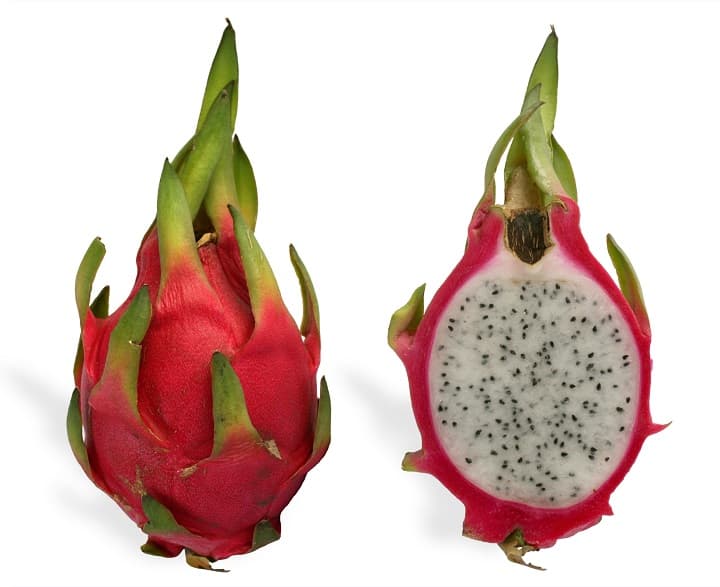
Dragon fruit is probably the most recognizable fruit in this list because it is often used as an icon for exotic Asian fruits. Although it originated from Central America and is mostly imported from Vietnam or Thailand, Dragon fruit is very popular in China. The peel is red and rubbery as green spikes are attached to it.
As the outside layer is peeled, the white or reddish meat is exposed with black seeds spreading all across the flesh. And you can start scooping with a spoon and enjoy this delicious fruit. The seeds are edible as well.
Benefits: Dragon fruit is fat-free and full of fiber. It has antioxidants that can help people grow or heal faster and reduces the probability of cancer. It contains prebiotics that helps you to maintain a healthy digestion system.
Possible Side Effects / Dangers: Dragon fruit is usually safe to eat as common fruits such as bananas or apples.
5. Pomelo
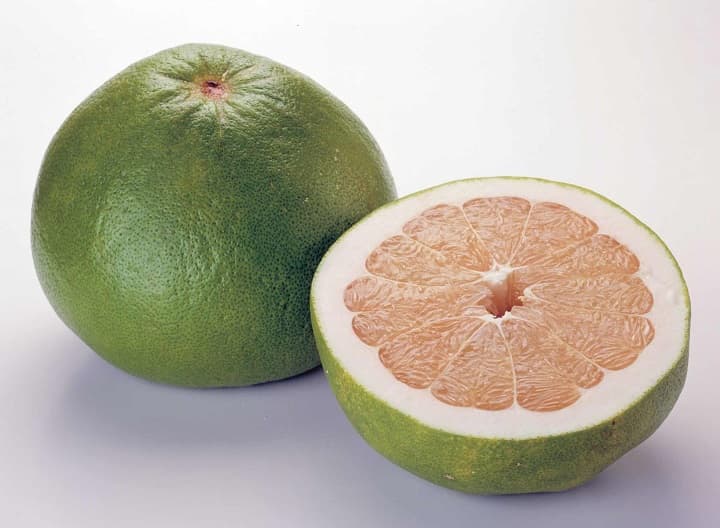
The mammoth of the citrus fruit family, Pomelo, can be compared to a basketball in size. The structure is similar to other citrus fruits such as grapefruits or oranges. The peel is yellow-greenish, and the fruit itself is pink, sometimes rose-colored, and super juicy. The flesh is divided into fibrous segments. Though it may look like a grapefruit, it is less sweet when consumed.
In China, it is believed that Pomelo brings good luck. This fruit is often eaten as an after-dinner snack or dessert in that country. It is also used in decoration and dessert for the Chinese New Year.
Benefits: Just like other citrus fruits, Pomelo also has Antioxidants such as vitamin C that help you to prevent cellular damage as an anti-aging property. It may also contain anti-bacterial and anti-fungal substances. But for being less sugary, this fruit can be easily added to your diet plan.
Possible Side Effects / Dangers: A person should avoid this fruit if he is taking Statin drugs to maintain cholesterol level since, like Pomelos, other citrus fruits contain a compound called furanocoumarins that can affect the metabolism of Statin drugs.
6. Mangosteen
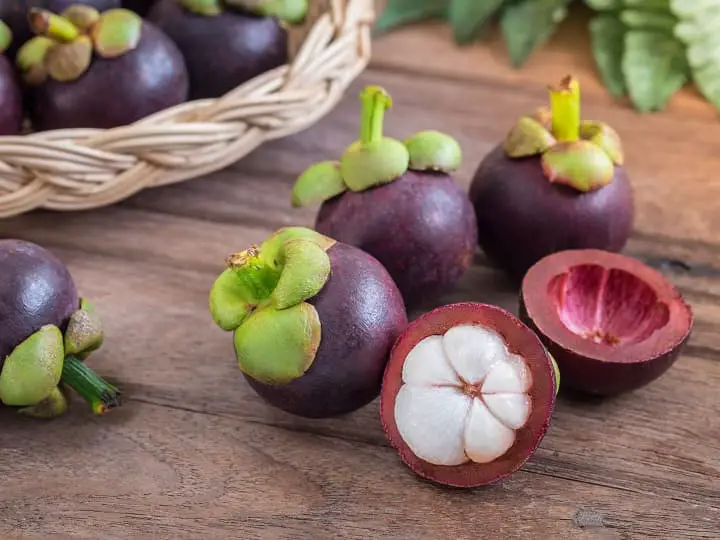
Comparing a Mangosteen to a Mango would be foolish as comparing a pine-apple to an apple since they have no similarities. This fruit has a thick dark purple exterior that must be peeled away to reveal the white meat inside that is sweet as sugar and a bit sour.
Growing Mangosteen is very difficult and doesn’t stay fresh for long, and that’s why this fruit very rare in western countries. It originated from Indonesia but made its way to China and became very popular among Chinese people.
Benefits: Mangosteen seems to be effective in lowering the chances of cancer and other heart diseases. But It is known for its ability to reduce pain and avoid inflammation since it is full of Xanthones that have such capacities to do so.
Possible Side Effects / Dangers: There are no known unhealthy side effects of this fruit. But it should be avoided if you are having blood clotting problems and taking blood-thinning medication because of its contained Xanthones.
7. Goji Berry
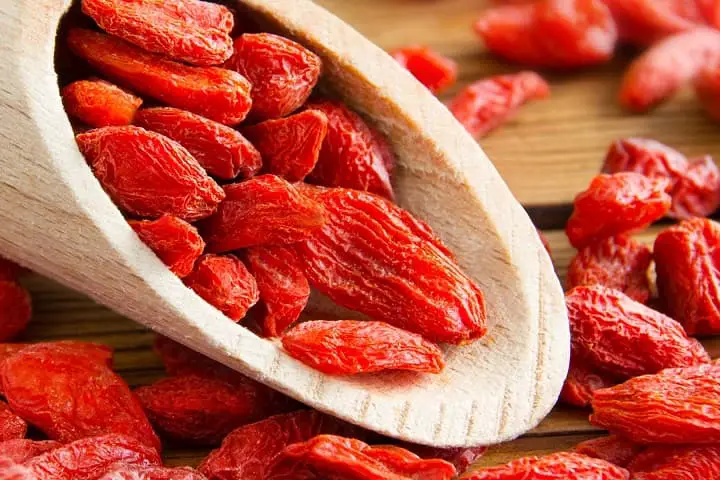
If you find any fruits that look like tomato cherries and mostly bean-shaped, they are Goji berries. This fruit is also called Chinese Wolfberries worldwide. For centuries, this fruit has been used for spiritual and medicinal purposes. And its taste is often closer to tomato with sweet kicks and sometimes leans towards cranberries.
This fruit is barely sold fresh. Mostly they are dried like raisins and sold in plastic bags at local markets in China. They are also a bit expensive. You can eat them out of the bag or add them to your tea or other desserts for an extra fruity flavor.
Benefits: Goji berries are immensely rich in nutritional benefits. They have plenty amounts of zeaxanthin. This compound helps you protect your lens and retinas from damage and let you have good eyesight. It is also rich in proteins and vitamins like vitamin A, vitamin B1, B2, and Vitamin C.
Possible Side Effects / Dangers: Goji berries are one of those “Hot foods” like Durian or Lychee that may make you perspire and stay awake for a while after consuming a lot of them at first. Goji berries can also interact with other drugs, so don’t have them if you are taking medication for Diabetes or Blood-thinning. Pregnant women are also advised to avoid this fruit to prevent some allergic reactions that may occur.
8. Jujube
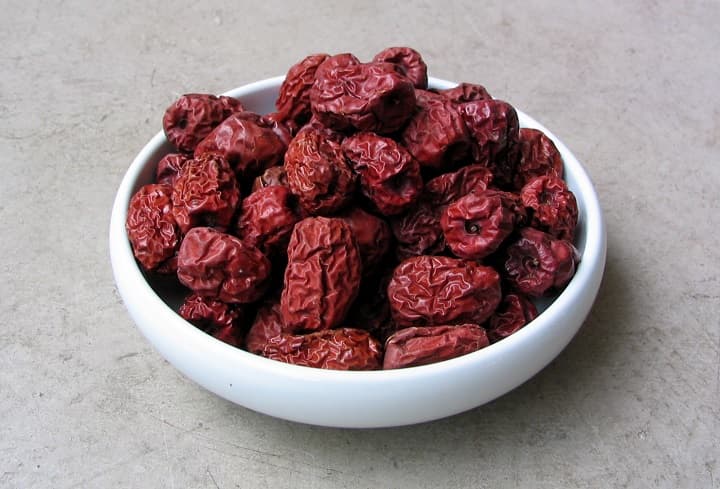
Jujubes are often described as similar to Apple cherries when fresh. When a Jujube is at its young age, the outside is green and, when the fruit ripes, it takes a dark red form. This fruit has a similar texture to an apple. And it also tastes like an apple but with a hint of cinnamon. This fruit is very well-liked in China but also in South Asia.
But mostly, they are sold dried. Dried jujubes look like dates. At that stage, they get wrinkly and chewier. Dried Jujubes are also a lot sweeter than fresh Jujubes like raisins.
Benefits: Jujubes are often taken to reduce stress since they are believed to contain beneficial properties like an anti-stress and anti-inflammatory agent. Half of their carbs are fibers and that’s why they help to have proper digestion.
Possible Side Effects / Dangers: Jujubes are safe to eat without any major issues or side effects.
9. Buddha’s Hand
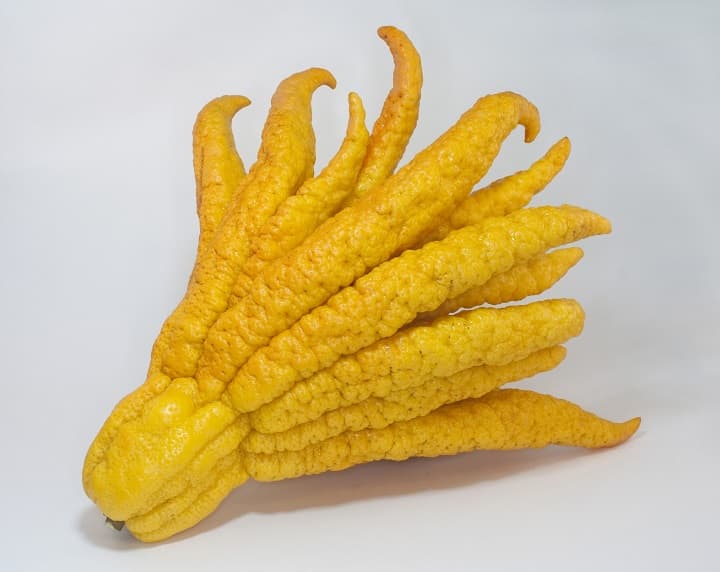
A weird name indeed, but it’s the fruit shape that is even weirder. It has finger-like strands that connect at one end like a hand. It is a citrus fruit that looks nothing like any other fruits in this family, is also called Fingered Citron. It has a strong aroma and mostly smells like citrus fruits but sweeter.
It doesn’t have any pulp or fruity flesh inside, just the pith or rind. The inside may look like the white part of the exterior in other citrus fruits, but it is not bitter and somehow a bit sweeter and edible. People mainly use it for its aroma, which can add significant flavor to any cake, juice, or any fruity dessert that you may prefer. The fruit itself can be enjoyed fresh or by candying it.
Benefits: Like other citrus fruits, Buddha’s Hand is also immensely rich in vitamin C. So, it is beneficial to your skin and bones. This fruit has been used for pain-relieving purposes for centuries since it has anti-inflammatory compounds such as Limonene, Diosmin, and Coumarin. This fruit is also helpful to respiratory and gastrointestinal problems.
Possible Side Effects / Dangers: There is no major issue found with this fruit.
Frequently Asked Questions
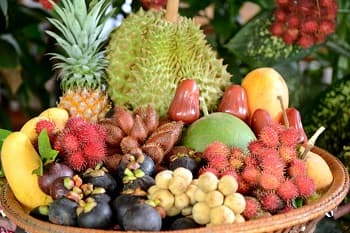
Top 9 Native Chinese Fruits to Grow
What fruits are native to China?
Are pomelos from China Safe to Eat?
Which fruit is known as the Chinese Apples?
Why do Chinese peel apples?
Do Chinese eat apples?
Are Chinese oranges safe to eat?
How can I avoid buying food from China?
Is Chinese apple good for you?
Is jujube high in sugar?
Why do they call pomegranates Chinese apples?
There were a lot more exotic fruits that we could mention here. But it would be entirely a long and tiring journey. And that is the beauty of China, how this country can offer an exploration of cultures that rarely ends. China has one of the biggest biodiversities and varied geographical locations, making fruits that China can provide worth trying.
Conclusion
They may not be familiar to you, but if you ever think of visiting the Great Wall, you should keep in mind to try them, because they can give you the tastes of the cultures that stood for thousands of years.
